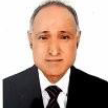
A. H. M. Asadul Huq
Work place: Electrical and Electronic Engineering, University of Dhaka, Dhaka, 1000, Bangladesh
E-mail: asadul@du.ac.bd
Website: https://orcid.org/0009-0000-8693-4872
Research Interests:
Biography
A. H. M. Asadul Huq received the B.Sc. (Hons.) and M.Sc. degrees in Applied Physics and Electronics from the University of Dhaka in 1980 and 1981, respectively. Since M.Sc. studies, he is working in the field of Electronic communications and DSP. He received the Doctor of Engineering degree in 1994 from the Graduate School of Natural Science and Technology, Kanazawa, Japan in the field DSP. He was with Bangladesh Atomic Energy Commission, Dhaka, Bangladesh from 1985 to 1996. He worked in Oakridge National Laboratory (ORNL) in Tennessee, USA in 1991 as IEAE fellow. In 1996, he joined the Department of Applied Physics, Electronics and Communication Engineering as Assistant Professor. In 1997 he went to the Communication Research Laboratory (CRL) of Japan to do Post-doc research in the field of the mobile telecommunication systems engineering. Presently, he is Professor in the same department of University of Dhaka and continuing research in the field of DSP and Electronic Communications.
Author Articles
Beamforming and Modulation Optimization for Active and Passive Reconfigurable Surfaces in 6G THz UMMIMO Networks: A Comparative Study
By Md. Mizanul Hoque A. H. M. Asadul Huq
DOI: https://doi.org/10.5815/ijwmt.2025.05.04, Pub. Date: 8 Oct. 2025
The aim of this research is to comparatively evaluate and optimize the performance of active and passive Reconfigurable Intelligent Surfaces (RIS) in Terahertz (THz) Ultra Massive MIMO(UM-MIMO) systems for 6G Wireless Communication. The Primary objective is to analyze the impact of beamforming and adaptive modulation schemes on system capacity, computational complexity and power consumption. The study employs MATLAB based simulations under realistic wireless channel models including Rician fading channel and free space path loss to model the propagation behavior at THz Frequencies. Both active and passive RIS configuration are assessed using hybrid beamforming and multi antenna transmission techniques. Simulation results demonstrate that active RIS improves system capacity compared to passive RIS. Particularly at higher SNR level, while incurring more power consumption. Conversely, passive RIS offers better energy efficiency and lower complexity, making it suitable for low-power scenarios. These findings highlight critical design trade-offs and support the development of hybrid RIS assisted UM-MIMO architectures for efficient and scalable 6G THz communication systems.
[...] Read more.Optimizing Beam Dynamics and Spectral Efficiency in umMIMO: A Study on 6G THz Networks with Varying Channels and Precoding Techniques
By Md. Mizanul Hoque A. H. M. Asadul Huq
DOI: https://doi.org/10.5815/ijwmt.2025.01.05, Pub. Date: 8 Feb. 2025
This paper explores the potential of Ultra-Massive Multiple Input Multiple Output (UM MIMO) systems as a key technology for 6G wireless communications within the Terahertz (THz) frequency band (0.1 – 10 THz). The THz spectrum offers immense capacity and speed advantages but presents significant challenges, such as higher propagation losses and limited coverage range due to atmospheric absorption and signals spreading. The study provides a comprehensive analysis of UM MIMO’s technical performance in overcoming these challenges, focusing on key metrics such as signal propagation, system capacity, and coverage range. Additionally, the research examines the optimization of beam dynamics and spectral efficiency in UM MIMO systems under various wireless channel conditions and precoding techniques. The findings highlight the importance of advanced antenna techniques and adaptive beam management in maximizing the efficiency and viability of 6G THz networks, positioning UM MIMO as a fundamental solution for next-generation wireless communication.
[...] Read more.Other Articles
Subscribe to receive issue release notifications and newsletters from MECS Press journals